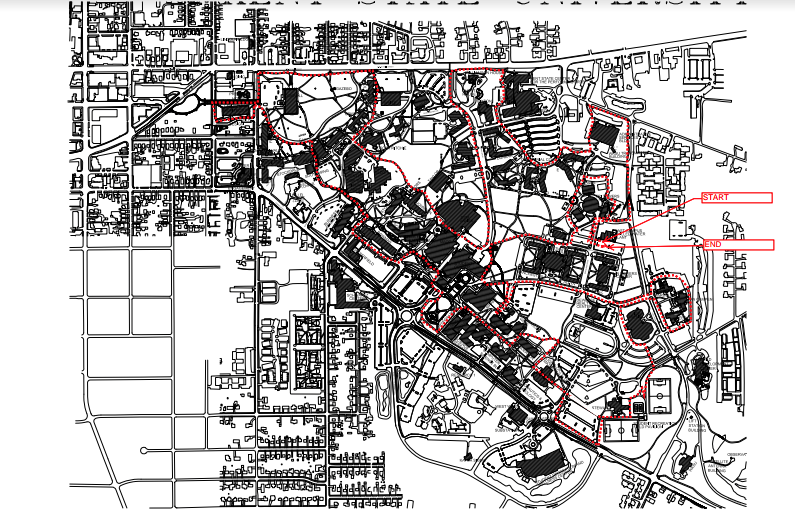Kent State annual Safety Walk shows progress in campus-wide lighting
November 18, 2016
Kent State officials concluded that lighting around public campus areas is suitable for safe travel during the university’s annual Safety Walk on Thursday night.
The Kent State Police Department, university architect’s office and the university’s facilities management department, gathered to monitor residence halls, public walkways and class buildings during its cross-campus tour.
“It is crucial, because we normally work in the daytime,” said Bob Misbrener, Kent State project manager. “We don’t live here and we don’t go to the bars from a home that is on campus, so we don’t take those kind of paths. To be able to step in the perspective of a student and see how their safety is felt on campus — is a great tool for all of us.”
The Safety Walk’s main task is reporting faulty lighting and making recommendations to the university for additional lighting. The information is gathered in a public report.
“Our main priority here is for the safety of this community, so yearly we go around to do a safety walk around campus to see if there are any areas of concern,” said Tricia Knoles, a Kent State community resource officer. “Every year we find something that could make us a little bit safer and a little bit better.”
As for problem areas on this year’s walk, the group reported an issue in the Rockwell parking lot, where every pole light surrounding the area was not lit. However, Misbrener said the issue could be easily fixed by the university within days. The issue was fixed by the end of the night, according to the final report.
“(The issue) is most certainly the control system that has a little issue or a breaker pop or somebody inadvertently shut off the breaker while they were working on something else,” Misbrener said.
Another area of concern became the hill in front of Taylor Hall and the May 4 Memorial site near it. The group noticed how dark the area is and proposed talking to the university in order to illuminate the hill area.
“It’s something that we’ve noticed before,” Knoles said. “But now, there’s a lot of pedestrian traffic that goes down there (since we added the parking lot where the tennis courts used to be).”
The group considered using May 4’s 50th anniversary as an opportunity to add lights near the field’s bell and make it safer for students travelling in the area.
“You have to plan those things for long periods of time. Predominantly safety and preserving that memorial would be the two key elements to deciding that,” Misbrener said.
Despite those two areas of concern, Knoles and Misbrener were both impressed with the university’s progress in making sure all public areas are well-lit.
“Last year and prior years there have been a lot more lights out,” Misbrener said. “I think maintenance is keeping much better tabs on the few that we saw out, except for the breaker at the Fashion building. It’s a mere fraction of what it was before.”
Steve Marshall, the senior lighting specialist for Kent State’s partner company Brewer-Garrett, said he was impressed with the university’s progress as well.
“We think there’s maybe 2,500 pole lights across this campus, we had maybe a dozen that we had to note were not functioning properly as far as individuals and there are a few isolated areas where construction may be impacting that,” Marshall said.
As Marshall and Misbrener pointed out, the improvements in public area illumination are likely linked to the university’s effort to improve its lighting through LED lights. It was a process that Marshall and his company helped out with.
“The parking lots are lit to a level of security that we did not have before,” Misbrener said. “The spread of the LED gets the lights to all the corners and all the areas of the parking lots versus the older lights that had a big blob of light.”
The full report was released my Misbrener a few days later, with over 30 reported outages or suggested improvements to campus lighting. All reported issues or fixes can be found on the map at the top of this article.
Mitch Felan is the safety and transportation reporter, contact him at [email protected].












